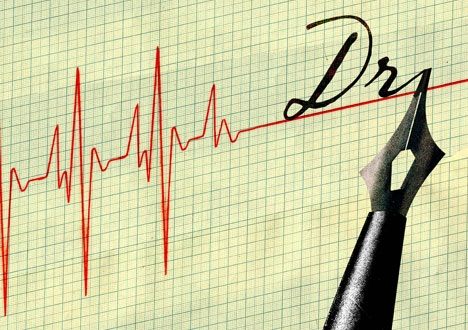It's a New Day in Public Health.
The Florida Department of Health works to protect, promote, and improve the health of all people in Florida through integrated state, county, and community efforts.
Death Certificates Present Final Medical Complication
September 29, 2015

Recently, the American Medical News featured an article related to the challenges that presented during the signing of a death certificate. See below for a portion of the article.
From American Medical News (amednews.com)
Death certificates are vital documents that serve as the primary source of information for families, insurance companies and authorities about a patient's cause of death. The information also helps policymakers set public health goals and research funding priorities.
But signing a death certificate is not always a straightforward process.
Physicians often face uncertainties about an individual's cause of death or how to answer the portions of certificates they are responsible for. Although the basic format has changed little in the last few decades, doctors face difficulties as some states attempt to convert from paper to electronic certificates.
Doctors need to recognize the importance of the documents and be as specific as possible, said Gregory McDonald, DO, chief deputy coroner of Montgomery County in Pennsylvania.
“Their duty doesn't end when the patient dies,” Dr. McDonald said. “A lot of physicians when they're signing a death certificate don't realize that what they put down has some real, long-term ramifications.”
Most doctors are never taught how to fill out the documents, said Randy Hanzlick, MD, chief medical examiner for Fulton County in Georgia and professor of forensic pathology at Emory University School of Medicine in Atlanta.
“Training is a big problem. There are very few medical schools that teach it,” he said. “For many physicians, the first time they see it is when they are doing their internship or residency and one of their patients dies. The nurse hands them a death certificate and says, 'Fill this out.' ”
That was the case for Drew Rosielle, MD, assistant professor of medicine and director of the Hospice and Palliative Medicine Fellowship at the University of Minnesota Medical School. He was given his first death certificate to sign as a young resident and had to ask a colleague what to do.
Physicians who are new to signing death certificates probably will have the document returned if they make a major error or omission, said Dr. Rosielle, a palliative care physician. “I think a lot of physicians learn by having them rejected by the medical examiner,” he said.
The basic information that death certificates require hasn't changed much. Every 10 to 12 years, the Centers for Disease Control and Prevention's National Center for Health Statistics has a committee review the U.S. Standard Certificate of Death, Dr. Hanzlick said. States must follow the standard but may have some variation based on the health concerns in a specific area. The most recent changes to the standard form about 10 years ago included questions about pregnancy and whether tobacco use contributed to a death, he said.
To read the article in its entirety please visit: http://www.amednews.com/article/20130121/profession/130129979/4/
Photo credit: Brian Stauffer / www.brianstauffer.com





Connect with DOH